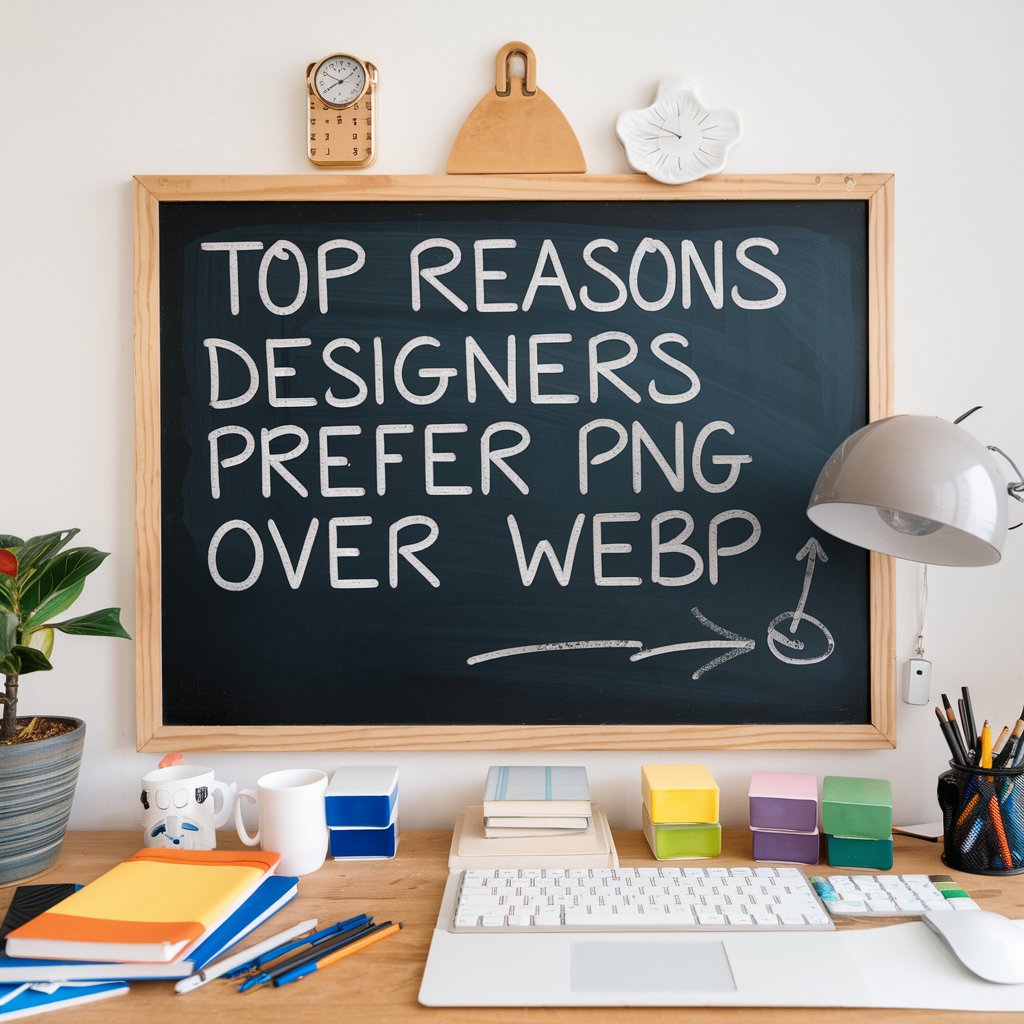When navigating the graphic design world, file formats can make or break your workflow, noting that each format has its perks and quirks. Such prows and downsides often impact how your final project turns out and how you interact with it, for example, compatibility and sharability. Two popular contenders in the design space are PNG (Portable Network Graphics) and WEBP, a more modern web-centric format designed to make images much smaller. WEBP is a favorite for web developers seeking lightweight assets since it helps with faster loading speeds. However, PNG still reigns supreme for many graphic designers, and with good reasons. Let’s dive into why PNG remains the top choice over WEBP.
Transparency
If you have ever struggled to make some parts of an image transparent, semi-transparent, or opaque, then you acknowledge that transparency can make or break a design. PNG facilitates high transparency because it supports true alpha transparency, which adds an extra numeric value to each pixel. This allows designers to easily create images with varying opacity matching the project.
PNG ensures your transparent elements remain crisp and intact. This is unlike when using WEBP, whose rendering is often seen as less reliable, especially across older platforms or software. As a designer, you typically need seamless integration with no jagged edges or weird artifacts, which PNG facilitates.
No Size Limitation
Have you ever tried to save a massive design file only to find that your format can’t handle it? It is frustrating, to say the least, especially after maybe hours of designing. That won’t be an issue when you opt for PNG since this format is built for handling large, high-resolution images.
WEBP can also be efficient on this front, but the format struggles with larger files. It occasionally compresses the files in ways that compromise quality, which is the last thing you want after hitting that sweat design. For projects like billboards, detailed mockups, or high-quality prints, you want a format that can handle every pixel of your masterpiece, and that is what you get with PNG. You won’t have to worry about hitting size restrictions that could impact your workflow.
Image Quality
Image quality is arguably one of the most critical aspects of design work. This is why graphic designers prefer PNG over WEBP, noting that its lossless compression ensures that your images look as sharp and detailed as you intended. This is no matter how many times you save and edit them since they remain as they are with no compressions that could alter the quality.
WEBP compresses and sacrifices some details to make the image smaller, which can impact its quality. Unlike WEBP, PNG preserves every little detail, making it the clear winner in visual quality.
Flexible Editing
PNG allows you to open, tweak, and save a file as many times as needed, all without worrying about degrading its quality. Such flexibility is a huge advantage considering the time and effort such impact saves, especially when iterating on designs or collaborating with a team.
The best part is that without impacting the quality, you can effortlessly convert the PNG file to a different format using resources such as Webptopng.io. Even better, you can convert a WEBP file into a PNG using the same tool and enjoy better editing control.
WEBP supports lossless modes, but considering its relatively new status, not all design software fully supports it. If you’ve ever tried explaining to a client why their logo doesn’t open in their preferred tool, you know why editing flexibility is crucial. You’ll rarely encounter those headaches with PNG because it is practically universally compatible and designer-friendly.
Browser Compatibility
WEBP is optimized for the web, but let’s not forget that PNG is practically a household name. This means that almost every browser and platform supports PNG natively. Such compatibility ensures that your designs look flawless no matter where they’re viewed. As a designer, this is one less thing to worry about when sticking with PNG. The format helps ensure your creative work is seen in its full glory without compatibility hiccups.
Every graphic designer acknowledges that the choice of file format isn’t just about convenience. It’s also about ensuring your creativity shines through every pixel. WEBP offers compelling benefits for web developers but often falls short of meeting graphic designers’ complex needs. This keeps PNG closer to the hearts of many graphic designers.






